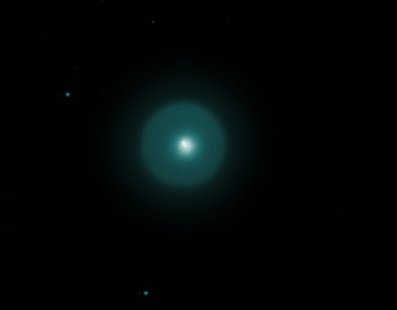 Comet Holmes, photographed on October 24, 2007, shortly after its
Comet Holmes, photographed on October 24, 2007, shortly after its
unexpected outburst.
Credit: Conrad JungAt the risk of sounding a news flash that will be past history by the time it hits the web, I can't let the sudden and unexpectedly bold appearance of normally mild-mannered and unassuming Comet Holmes pass without comment.
British astronomer, Edwin Holmes, discovered Comet Holmes in 1892. The comet orbits the Sun once about every seven years, bopping between the endpoints of its elliptical orbit from a point a bit beyond Mars' orbit (at its closest distance to the Sun) all the way out to the distance of Jupiter's orbit. Ordinarily, this comet doesn't become an unaided-eye apparition, usually cruising by well below the necessary brightness for this type of visibility. In fact, it's usually not easily visible in telescopes.
However, on October 24th something happened that surprised us all: Comet Holmes experienced an "outburst," suddenly exuding gas that expanded to form a bubble-like cloud around the comet nucleus.
The bubble -- called the "coma" -- is much larger than the icy nucleus; in fact, a typical comet coma fills a volume of space greater than a planet, even if the nucleus itself is a modest object only tens of miles across. Most likely induced by the comet's closest passage to the Sun last May, and all the solar heating of its ices that passage entails, the outburst was so quick and so pronounced that the comet went from an extremely faint 18th magnitude object to about a million times brighter, becoming easily visible to the unaided eye.
This is why I've dubbed Holmes the "Popcorn Comet." One moment it was a small, dark, dense kernel of ice and gravel, speeding along it's path farther and farther away from the Sun, the next moment (literally hours later), POP!, it was surrounded by a cloud many times its size and suddenly reflecting a million times more sunlight. By October 27th, the shell of the coma had expanded to a size quite a bit larger than the planet Jupiter.
